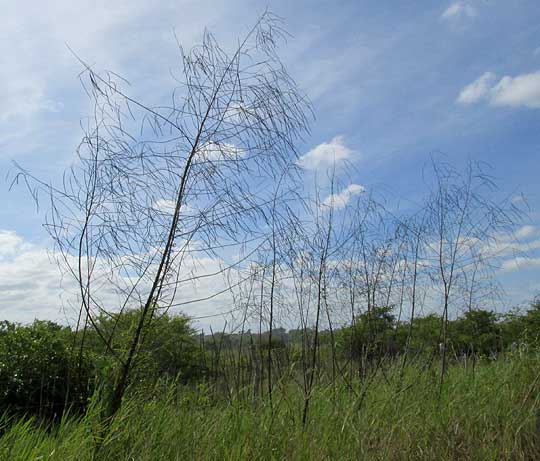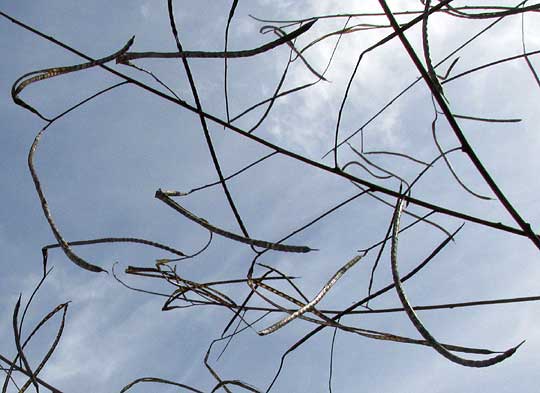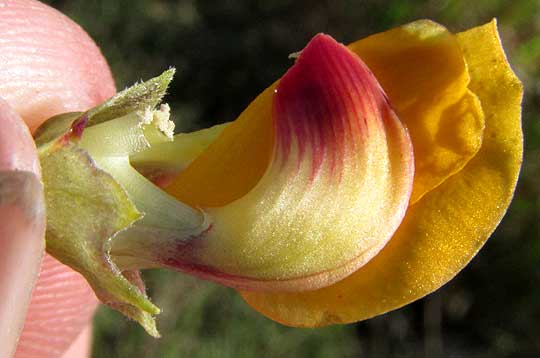Excerpts from Jim Conrad's
Naturalist Newsletter
from the December 7, 2014 Newsletter issued from Río Lagartos, on the Yucatan Peninsula's northern coast (~N21.60°, ~W88.16°), Yucatán state, MÉXICO
HEMP SESBANIA
Nowadays a common and eye-catching weed along the road paralleling the coast and passing through the marshes south of Río Lagartos is the ten-ft-tall one (3m) shown below:

Here at the beginning of the dry season the plants are mostly leafless, their stems dead, but bearing long, slender bean pods, or legumes. A closer look at the eight-inch long (20cm), curved pods, their sides bulging over each tiny bean inside, is shown below:

Though along the stretch of road where the above picture was taken, all the dozens of plants were leafless, elsewhere in a slightly different location the plants' branch tips bore freshly sprouting, pinnately compound leaves, and yellow, typically bean-flower-shaped (papilionaceous) flowers, as seen below:

By "papilionaceous" is meant a Bean Family flower with five petals, the top one, called the standard or banner, usually expanded, then there are two side petals called wings, and finally the two lower petals are fused along their common margins, forming a scoop-shaped structure called the keel. A close-up of a flower showing the much expanded, speckled standard with its sides drooped over the rest of the flower is seen below:

When the standard and the nearest wing are removed, the scoop-shaped keel is discovered to be reddish-tipped, as seen below:

We've seen this plant before -- back in Mississippi where it grew in wet sand along creek margins. You can see those tall plants still bearing green leaves at www.backyardnature.net/n/h/sesbania.htm.
This is SESBANIA HERBACEA, known by such names as Hemp Sesbania, Coffee-weed, Indigo-weed, Peaweed and a host of others. Back in Mississippi I'd developed the notion that Hemp Sesbania needed to be near streams, so I was surprised to find these growing in very dry, sandy, roadside soil, even though the road passed through marshes. Apparently what the plant likes is the soil's sandiness, not necessarily its wetness.
Hemp Sesbania occurs throughout the US's warmer states and sometimes farther north, plus all through Latin America into central South America. Despite its size, it's an annual plant, which explains why ours are dying here at the end of the rainy season. Despite its being an annual, its stem fibers are so strong that early indigenous Americans used them for weaving nets and for other uses.